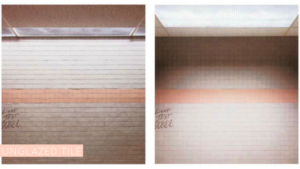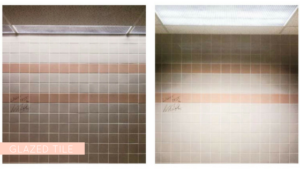
Lighting design is an important element to any space, and it can make or break an overall design.
For example, if lighting is too close or within a tile wall, it will draw the eye to minuscule flaws in the tile. Or, placing lighting directly above a tile wall will cause an unwanted and hard to look at the glaring effect.
So, what do we do? What is the right way to compliment tile design with great lighting design?
Here are some tips on how to create great lighting design to compliment tile walls, flooring, and backsplashes.
Light isn’t purely about function. It’s about creating a space that feels inviting – a space that feels like home. - James Bedell
At times, it can be easier to get more excited about the design of the lighting as opposed to the light itself. How much a light illuminates a space is crucial for design success. Truthfully, designers should seek to give visual cues to visitors through lighting design rather than just adding a pretty product. The goal is to tell visitors where and how to see/experience the space without verbally saying it.
Even though projects differ, as well as the spaces, designers should always consider what the area is going to be used for. Think about the people who will be responsible for the traffic, and explore their needs. Lighting yields exciting questions for designers: what is the color of the light? Will it be natural or artificial? How much light will be placed where? Use these ideas to generate a game-plan for each project.
Lighting and design experts agree layering light is always right. Instead of focusing on one fixture, consider having multiple sources of light. Layered lighting creates texture and texture supplements great design.
Building flat surfaces, up to ANSI’s standards, will reduce shadows. The smoother the surface, the more seamless the lighting. During the building process, monitor and uphold a high standard of design. In addition to ANSI’s standards, check the walls to make sure that they are “beaten in” (flat) during the process. This will reduce errors in the final product and keep your project timeline on point.
Design isn’t just what it looks like and feels like. It’s about how it works. - Steve Jobs
Above all, clear communication is key. To ensure efficiency, keep team members engaged throughout the entire project. For some designers and builders, holding periodical face-time sessions can clear up any sort of misunderstandings or miscommunication. Questions and/or standards about lighting design can be brought up during these sessions to maximize the quality of the project’s results.
Borrowed from one of our favorite tile brands, Audrey Lane, here is a lighting design before and after comparison. The ones on the left are before the above lighting tips were taken into account. The ones on the right are from after the facelift.

